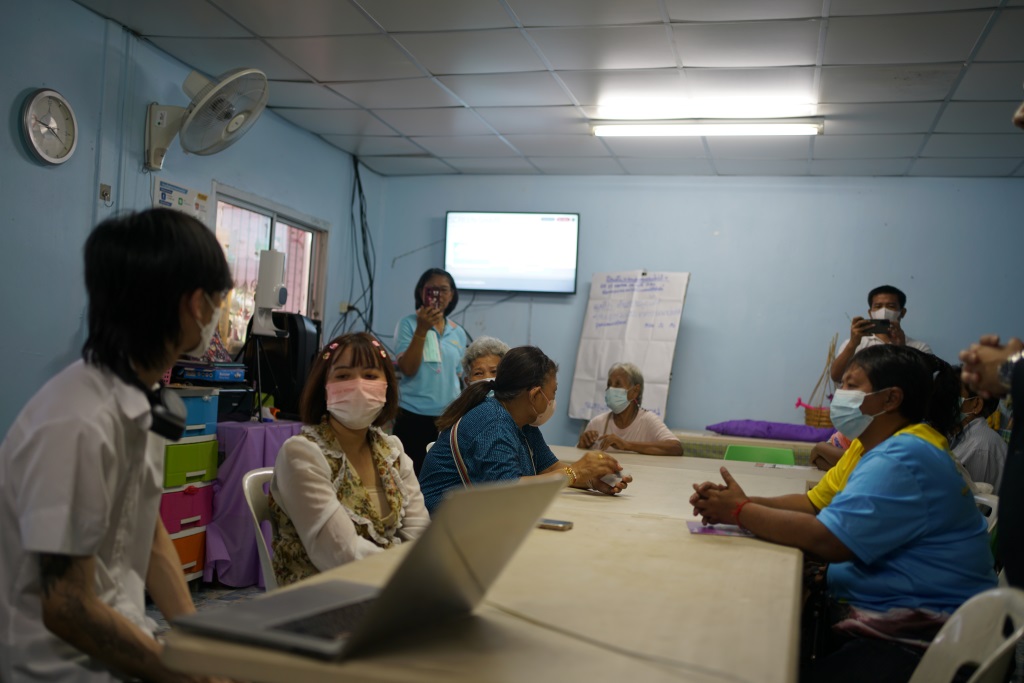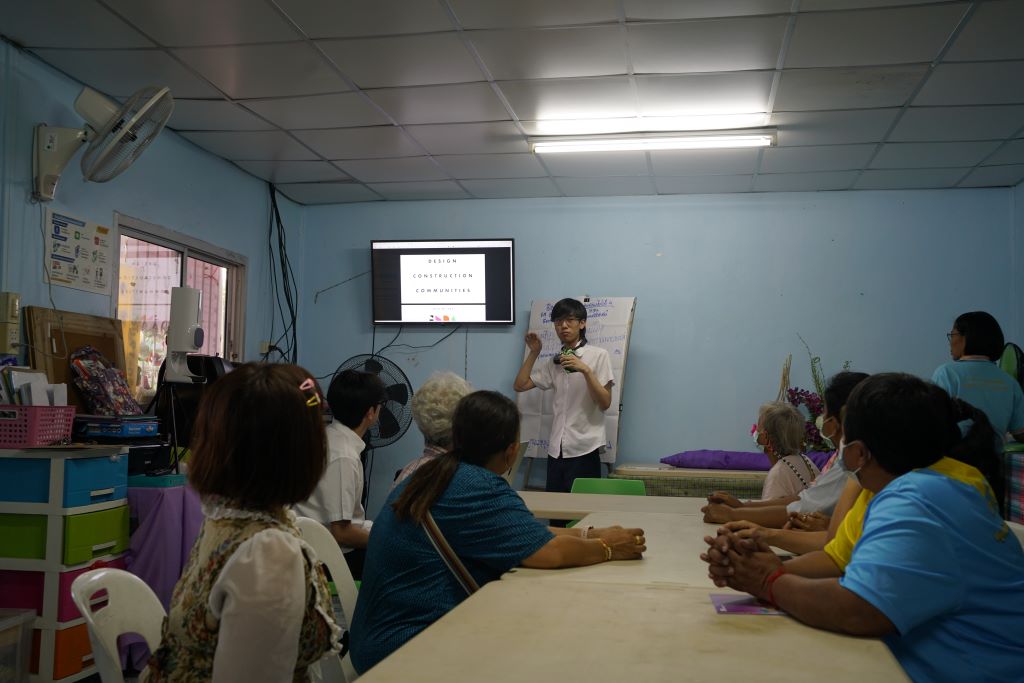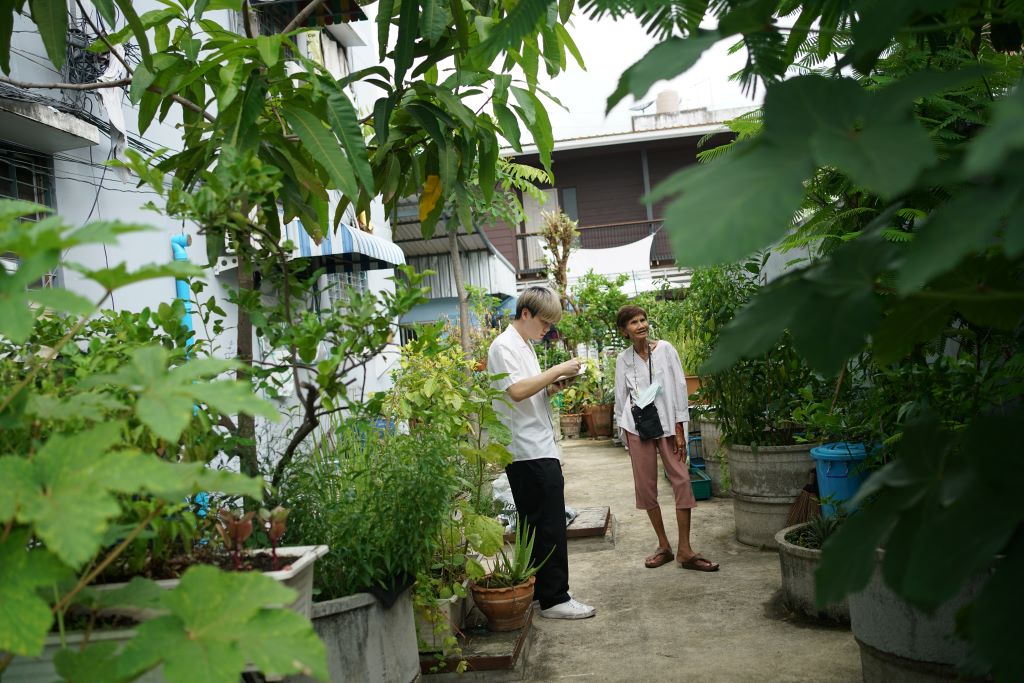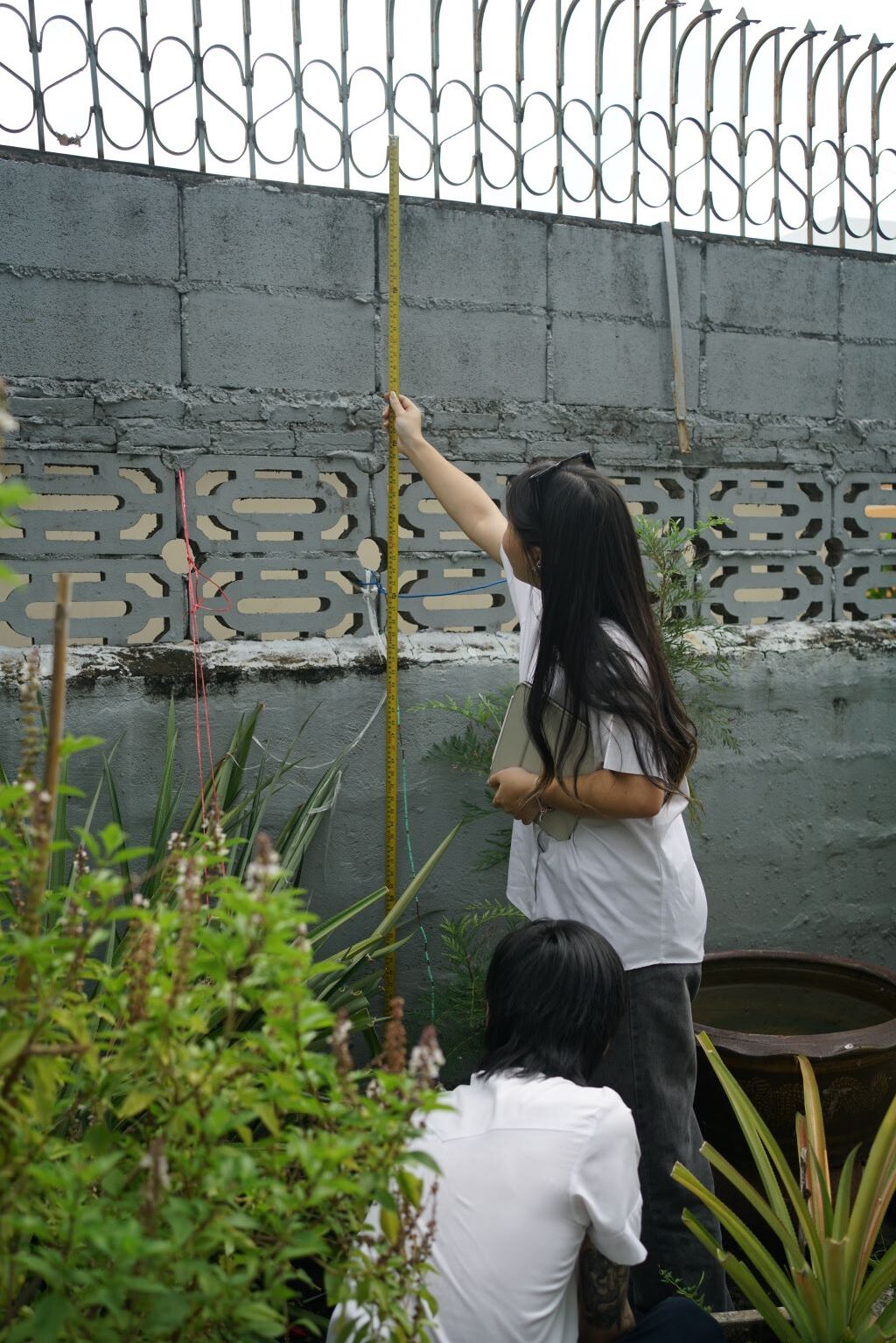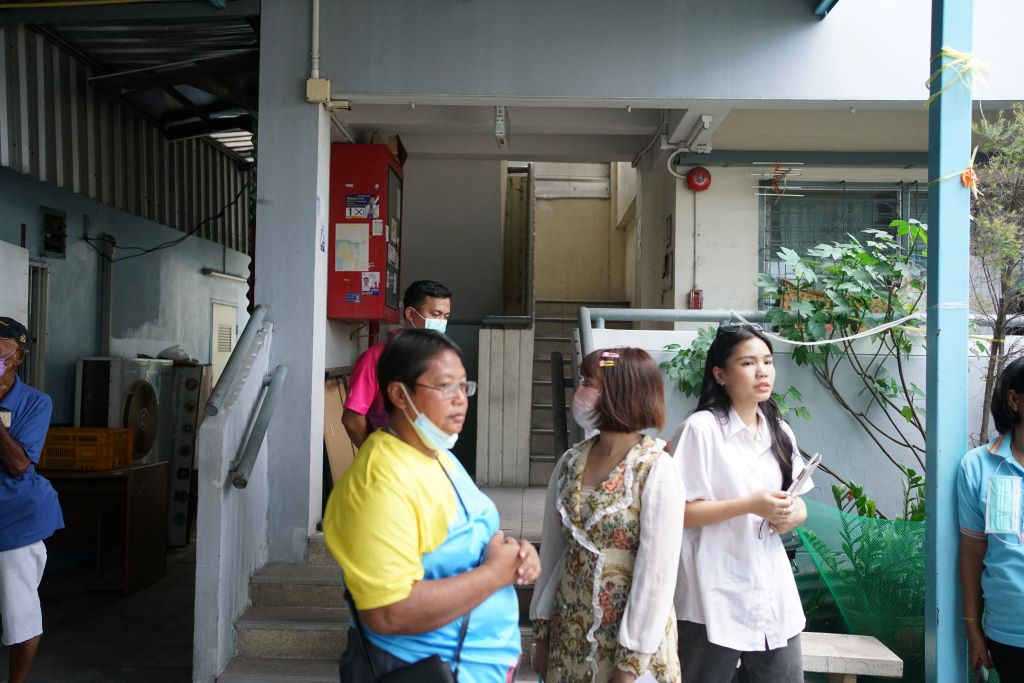The project is to design and deliver communal living spaces to an existing low income residential buildings. The buildings provide single aspect small living units and residents have no spaces to socialise or relax away from their bedroom. Some existing communal spaces are fragmented and lack of a vision for social interaction. The project intends to fill this gap using the available open spaces.
Focused on and a creative use and re-use of materials readily available, students develop the design starting from a catalogue of materials and ‘parts’ rather than an architectural form, thus learning how to develop a minimal and efficient yet creative architectural design. Particular emphasis is given to the environmental impact of the design whereby students are guided through design decisions within the general strategy.
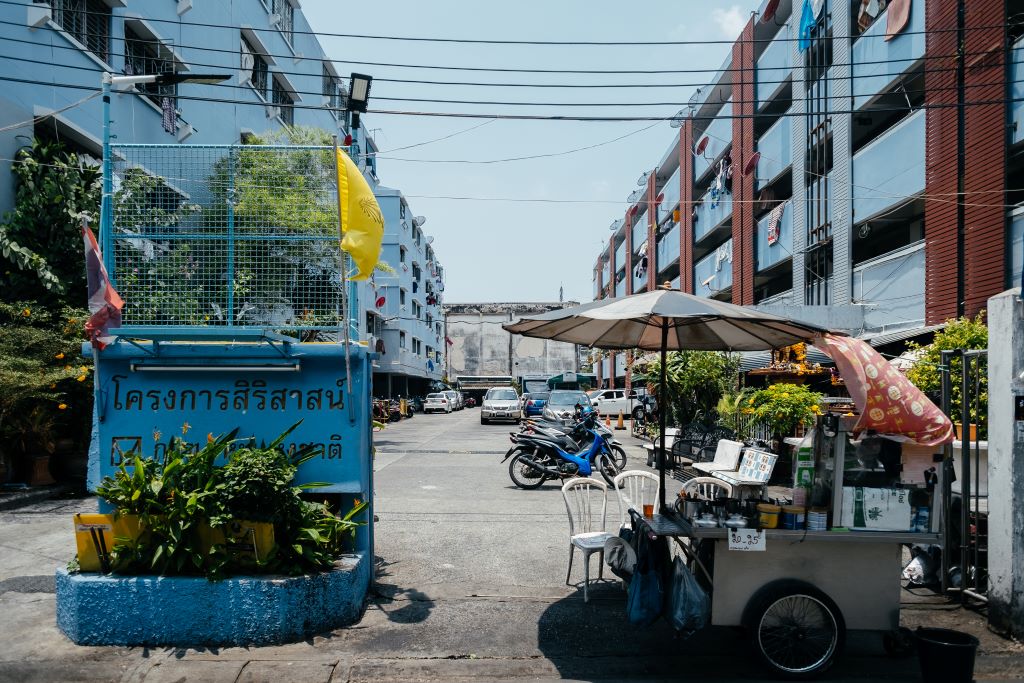
Stefano Dal Piva
Pakkamon Banlengchit
Taechit Chinachatchawarat
Danuda Chotkangwarn
Peeranat Hiranyaprathip
Pattaramon Kraiteerawut
Akkarapat Neeyapan
Natnicha Paseepol
Porama Phaisittrakun
Natthaphat Rojkittiskun
Natt Sereerath
Related Projects:

Indigenous Rangers
This program aims to design and build a new eco-tourism facility for an indigenous ranger community at the upper Nakhon Si Thammarat Mountain Range (NSTR). Over the past few years, INDA has developed intimate relationships with multiple national parks and local communities in the area. Within a protected tropical montane cloud forest (TMCF) lies a distinctive ecosystem known for its biological diversity, endemic species, and endangered wildlife. Under exceptionally humid marine and equatorial conditions, Sanyen (Tai Rom Yen National Park) is one of the largest TMCFs in Thailand. Tai Rom Yen National Park and Khao Luang National Park are working with local communities on an interdisciplinary and participatory approach to develop eco-tourism, educate people about conservation, and implement public awareness programs. Trail networks, exhibition spaces, camping facilities, and an information center must be re-conceptualized under new design frameworks.
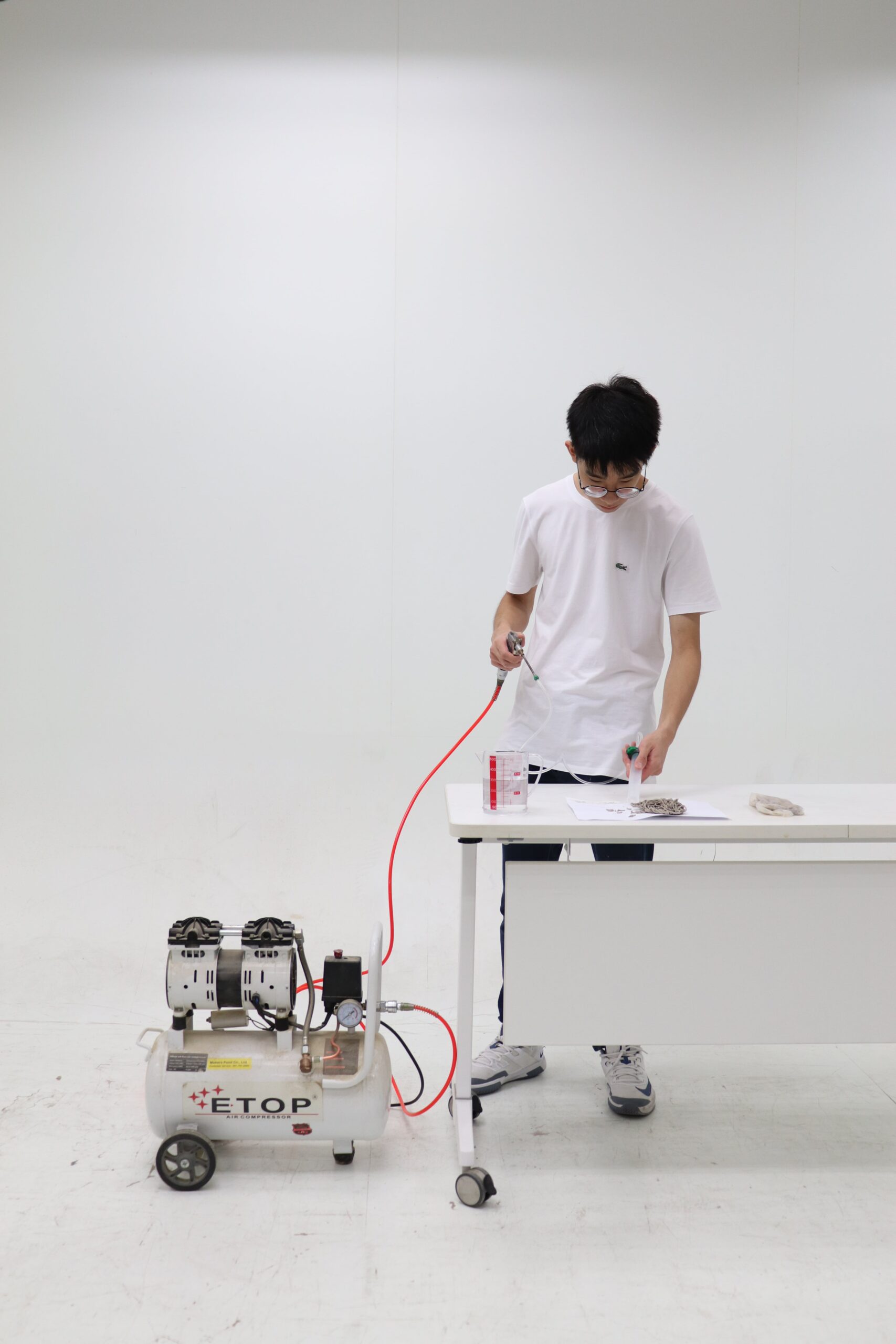
Toolcraft: Clay 3D Printer
The exploration of 3D printing was the centre of the summer workshop. The workshop was initiated by building an open-source clay 3D printer from scratch. Through the act of 'tool-building', firsthand experience of how 3D printing technologies work and the constraints and possibilities of the machine was gained by the students. Through adapting several open-source 3D printing designs, students went through a process of modifying and ‘hacking’ the 3D printer design, adding their own features and addons which could improve the machines efficiency and its possible printing techniques. Along with designing and building a 3d printer, the students' toolkit was further supplemented with digital tools primarily focusing on Grasshopper, where they learnt parametric design which generated custom g-code which sent tailored instructions and controls to the machine, allowing for a constant feedback loop between design development and testing.
